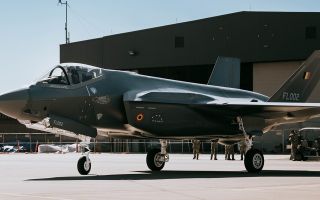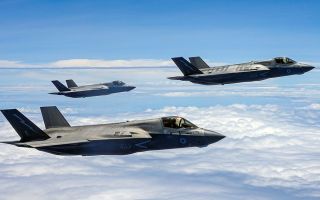Tri-Service
Russia's New Tanks To 'Leave West Outgunned'
A new Russian tank is set to leave its British and American counterparts outclassed, according to a senior former Army officer.
"It is ahead of anything else in the current NATO inventory in the shape of a like for like", the source told the Times.
With Russia already possessing a greater quantity of tanks than the UK - 35 times as many - the T-14 Armata (pictured above) is reportedly the next step in improved quality as well.
The first in Russia's next generation of tanks, it has a maximum firing range of 3 miles, compared to 2.5 miles for the British Challenger 2 and the American M1A2 Abrams tanks.
A Challenger 2 (left) and an American M1A2 Abrams (right)
With 125mm smooth bore guns, Russia will have a manufacturing advantage over the 120mm rifled barrels featured on the Challenger and Abrams because the latter wear out more easily and need to be replaced.
Armatas are also faster.
Weighing only 48 tons, they can travel at up to 55mph, compared to 42mph for the Abrams and 37mph for the Challenger 2. Both NATO tanks weigh around 62 tons.
T-14 Armata tanks (image: Vitaly V. Kuzmin)
Crews are also expected to be better protected in the T-14 because of explosive armour meant to repel incoming shells, and a crew-free digitally-controlled turret which leaves crew lower down in the vehicle and therefore less exposed to any shells that do penetrate.
The Times has also reported that a leaked intelligence document has questioned the MoD's plan to keep the Challenger 2 in service for 20 years, with concerns having also been raised about the effectiveness of Britain's newest mini-tank, the Ajax.
Russia has a history of innovative tank design, with the highly efficient T-34 tank incorporating optimally-angled sloping armour to offer better protection for its crews from anti-tank weapons.

A T-34 used as part of a reconstruction of the Battle of Berlin (image: Cezary Piwowarski)
It also featured wide tracks, allowing it to handle rugged terrain, and impressive firepower.
Because Russia was in the process of modernising its economy at the time, the T-34's design was also as simple as possible to facilitate ease of production.
400 of the tanks were initially produced in 1940. They were then produced in vast numbers, with improved, thicker armour, following Germany's invasion of Russia (Operation Barbarossa) in June 1941.
Its design went on to influence that of Cold War-era T-54 and T-55 tanks, which were involved in many conflicts after the Second World War.

A burnt-out T-55 tank in Iraq in 1991
And in the modern era, impressive videos have been released demonstrating the capability of tanks like the T-72 to drive underwater.
That's not to say the country's tanks - or indeed the T-14 - are without fault, however.
Just last year the new tank suffered an embarrassing breakdown, just a day before being officially unveiled in the country's World War Two Victory Parade.
Cover image: Vitaly V. Kuzmin









